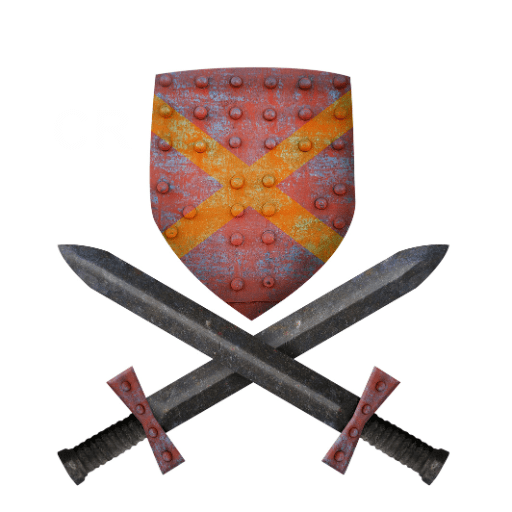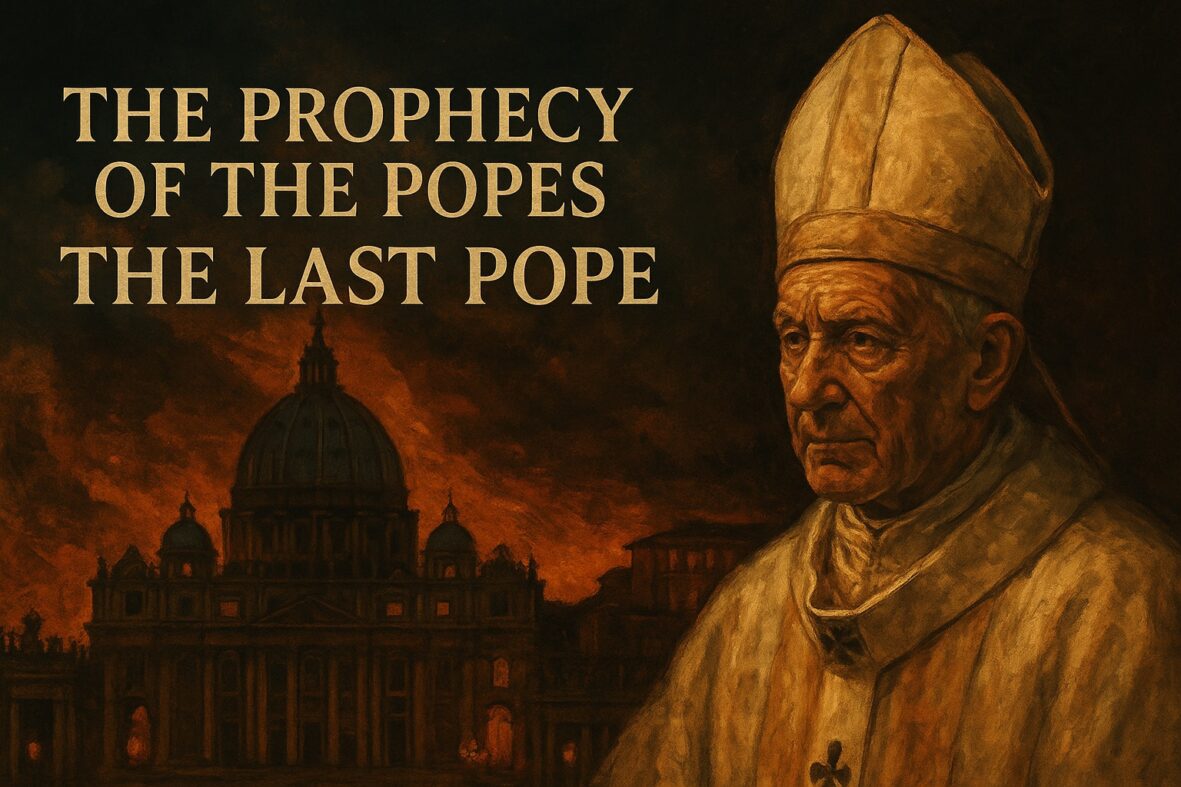In a forgotten monastery archive or an obscure bookstall in Rome, you might stumble upon a slim parchment attributed to a 12th-century Irish bishop. Its contents? A list of 112 cryptic Latin mottos that claim to predict every pope from Celestine II to the end of time. Some call it prophetic. Others call it a pious fraud. But one thing is certain—its final lines have captured the imagination of believers, skeptics, conspiracy theorists, and theologians alike: the last pope, ominously titled “Peter the Roman.”
The document is known as the Prophecy of the Popes, attributed to St. Malachy (c. 1094–1148), Archbishop of Armagh, who allegedly received a vision while visiting Rome in 1139. According to legend, he was shown a line of papal successors stretching to the final days of the Church. His vision, they say, was tucked away in the Vatican archives and forgotten for centuries—until it was published in 1595 by Benedictine monk Arnold Wion in his book Lignum Vitae(Wion, 1595).
Was it real? Was it politically motivated? Does it foretell the end of the world—or merely the end of an era?
Let’s walk through the mystery, meaning, and mounting eschatological intrigue.
A Cryptic List of 112 Popes: From Celestine II to “Peter the Roman”
Each pope in the list is described by a brief Latin phrase—enigmatic, poetic, and often ambiguous. The first entries are relatively clear, seemingly aligning with papal coats of arms, hometowns, or personal histories. Later mottos, however, become more obscure—inviting wild interpretation.
Examples:
• De medietate lunae (“Of the half-moon”) – Applied to John Paul I, who lived only 33 days, between two half-moons.
• De labore solis (“Of the labor of the sun”) – Applied to John Paul II, born during a solar eclipse and buried on another.
• Gloria olivae (“The glory of the olive”) – Interpreted as Benedict XVI, connected with peace or the Olivetans (a branch of the Benedictine order).
The final entry is not a motto, but a solemn paragraph:
“In the final persecution of the Holy Roman Church there will sit Peter the Roman, who will pasture his sheep in many tribulations: and when these things are finished, the city of seven hills will be destroyed, and the dreadful judge will judge his people. The end.”
This chilling finale doesn’t describe just a pope—but a scenario of cosmic collapse. Rome falls. The Judge comes. Curtains.
What Do We Make of It? Scholars, Skeptics, and Conspiracies
The prophecy didn’t appear in any known record until 1595—450 years after Malachy’s death. That’s enough to make even the most devout historian raise an eyebrow. Many scholars believe it was a forgery created to influence the 1590 conclave, promoting Cardinal Girolamo Simoncelli as pope (Nickell, 2005).
Still, defenders point to what seem like uncanny fulfillments in modern times. The solar eclipse connection to John Paul II. The metaphorical alignment of mottos to papal deeds and contexts. As with Nostradamus, ambiguity leaves room for retrofitted insight.
Modern Catholic sources generally reject the prophecy’s authenticity. The Catholic Encyclopedia doesn’t list it. Vatican spokespeople have distanced themselves from it. Theologically, it holds no doctrinal authority—but it continues to fascinate (U.S. Catholic, 2013).
“Peter the Roman” and the End of Days: A Theological Exploration
Here’s where it gets spicy.
Many have speculated that Peter the Roman is more than a pope. He could be:
• A faithful final leader in a time of persecution.
• A symbol of restored apostolic simplicity in a fractured Church.
• Or… the False Prophet of Revelation.
That’s right—some prophecy watchers suggest that the final pope will not be a shepherd but a wolf. This view, popularized by some evangelical and fringe Catholic writers, links Peter the Roman with the second beast of Revelation 13—the False Prophet who promotes the Antichrist (Revelation 13:11–18; 16:13).
According to this view:
• The Antichrist is a political leader (the first beast).
• The False Prophet is a religious leader who promotes him.
• If the pope is the most globally recognized religious figure… the leap becomes sensationally tempting.
Yet we must tread carefully. Scripture does not name the False Prophet as a pope. And dispensational eschatology—while allowing for a global religious system in the Tribulation (cf. Revelation 17:1–5)—does not demand that it be Roman Catholic in origin. The idea remains speculative, not doctrinal.
Still, the imagery is striking. “The city of seven hills” falls (Revelation 17:9). A beast rises. A false religious leader deceives the nations. The world trembles.
Between Speculation and Scripture: What Can We Say for Sure?
From a biblical worldview—especially a pre-tribulational, dispensational perspective—several conclusions stand firm:
1. The Bible is sufficient for eschatological truth (2 Peter 1:19–21).
2. The Antichrist and False Prophet are real figures who will rise during the Tribulation (Revelation 13).
3. The true Church will be raptured before these events (1 Thessalonians 4:13–18).
4. Rome may play a symbolic or literal role, but Christ alone reigns as King of kings (Revelation 19:16).
Extra-biblical prophecies like St. Malachy’s may provoke curiosity—but they do not provide clarity.
A Story Still Being Written
With the death of Pope Francis on April 21, 2025, speculation has reignited. Was he the 111th pope on the list? Will his successor be the mysterious “Peter the Roman”? Is the stage set for the final drama?
The conclave draws near. Cameras swarm the Vatican. The world watches. And whether one sees Malachy’s list as a masterwork of spiritual insight or a footnote in papal legend, the story continues to unfold beneath the dome of St. Peter’s.
For Christians grounded in Scripture, the call is clear: Discern the times, but cling to the Word.
Because regardless of how many popes remain, only one name is worthy of ultimate allegiance—the name above every name (Philippians 2:9–11).
And He’s not elected by conclave. He comes in the clouds.
References
Nickell, J. (2005). Real or Fake: Studies in Authentication of Art, Archaeology, and Literature. The University Press of Kentucky.
U.S. Catholic. (2013, September). What is the prophecy of St. Malachy? Retrieved from https://uscatholic.org/articles/201309/what-is-the-prophecy-of-st-malachy/
Wion, A. (1595). Lignum Vitae. Venice: Typographia Bonetiana.
Beliefnet. (n.d.). St. Malachy’s Prophecy of the Popes Explained. Retrieved from https://www.beliefnet.com/faiths/catholic/st-malachys-prophecy-of-the-popes-explained.aspx
Wikipedia. (2024, April 21). Prophecy of the Popes. Retrieved from https://en.wikipedia.org/wiki/Prophecy_of_the_Popes








